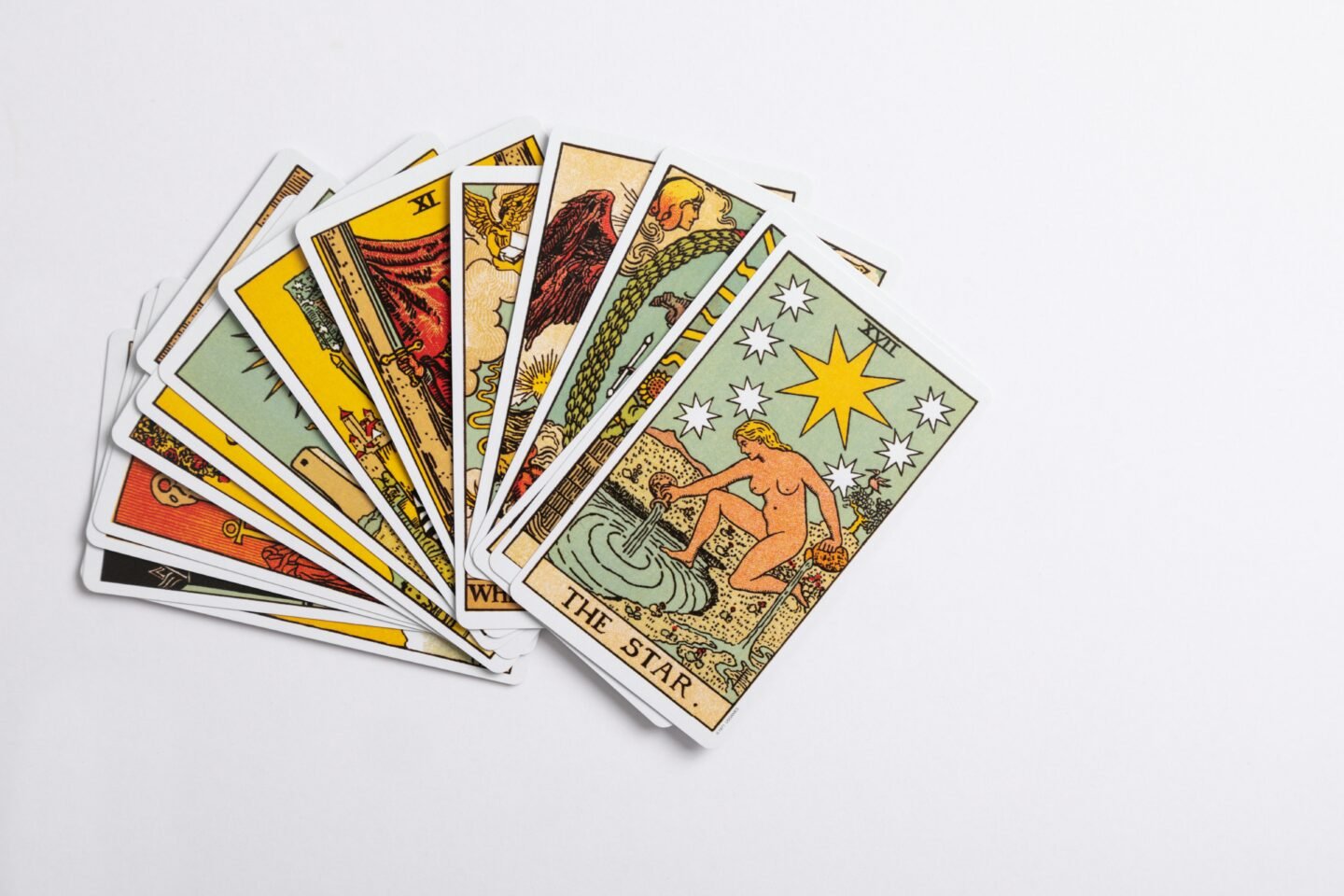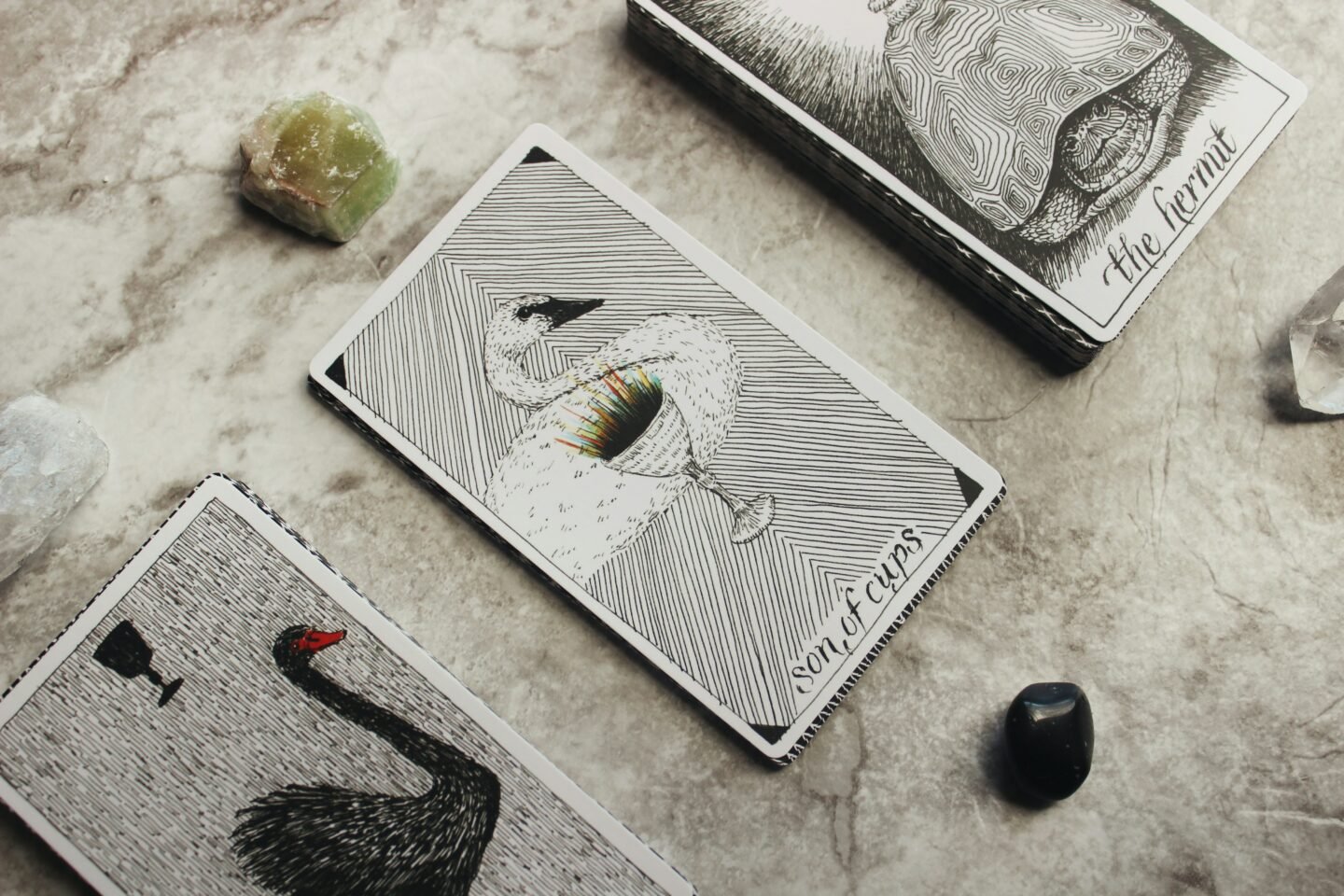It seems like everyone is working with tarot cards these days and we lesbians just LOVE a chance to get all deep and meaningful, don’t we? So let us give you the lowdown on how to get started with tarot reading.
A (very) brief history of tarot
The earliest tarot decks can be traced back to Italy and France in the 1400s where they were used for playing card games. Boh-ring.
But then, artist Pamela Colman Smith (who is rarely given the credit she deserves for creating the iconic imagery in the classic deck), and Arthur Waite created the Rider-Waite Tarot deck in 1910. This deck deviated from traditional tarot imagery, and deliberately included symbolic illustrations designed to convey esoteric meanings. Basically, they made it kinda spooky.
Very essential side note: It seems highly likely that Pamela was queer as they come. She advocated for women’s suffrage, had numerous gay friends, never married or had children, or any long-term relationships with men. She left her entire estate to Nora Lake, a woman she ‘lived with’ for the last 20 years of her life. You get the picture.
Over time, occultists and mystics began using tarot cards for spiritual insights. The Rider-Waite Tarot became popular and set the standard for many of the modern tarot decks on sale today.
Tarot basics
A traditional tarot deck has 78 cards that are divided into the Major and Minor Arcana. The Major Arcana has 22 cards representing archetypes, significant forces and milestone life events. Cards like The Fool, The Lovers, and Death offer spiritual lessons that can be interpreted based on the questions you ask and the placement of the cards in a spread (more on that later.)

The Minor Arcana has 56 cards in four suits (cups, pentacles, swords and wands) which tend to be focused on day-to-day events and emotions.
How to do a tarot reading
One simple way to start reading tarot is to start by pulling one card a day, at random. Clear your mind, shuffle the cards, and focus on your intention or question for the deck. Questions should be open-ended to get guidance on a particular theme or life situation.
Examples:
What should I know before I go to this job interview?
How can I make today a good day?
What obstacles are affecting my finances?
What opportunities am I not seeing?
OK, now get to shuffling the deck (no fancy skills required, just mix ’em up good) and wait for a card to reveal itself. It might fall out as you shuffle, or you may get the urge to stop shuffling and pick the card at the top of the deck.
Don’t overthink it, just pick a card and trust that you’ll get the one you’re supposed to at that moment.
Interpreting tarot card meanings
Spend time studying the card, looking at the symbolism, words, colours and general vibes of the card. Is there a lot of movement in the imagery? Is there a symbol that means something in particular to you? Does it evoke a certain emotion? This may take a bit of practice because so many of us are not used to being confident in natural intuitive skills. Be patient with yourself.
Each card has common associations – for example, The Fool represents new beginnings while The Tower signifies sudden change. The suits also carry meaning – cups relate to emotions, pentacles to finances and work, wands to passion and swords to conflict and communication.
Your intuition is your friend here. Pay attention to subtle feelings that arise when looking at certain cards. Does your eye keep returning to a particular card? That’s a sign it has a deeper message waiting to be discovered.
Trust in intuition first, and if you still can’t quite grasp the meaning or want to learn more, refer to the guidebook that came with your deck.
Tarot spreads
Once you’ve gotten into the swing of things, you can experiment with larger spreads. A spread is a specific arrangement of cards where each position in the spread represents a different aspect of the question or situation being explored.
These are ideal for doing more in-depth readings and can be customised to suit specific topics (e.g. career, relationships, spirituality) as well as general life readings.
You can find some cute, queer inclusive spread ideas here.
Common tarot myths
Sadly, tarot is not a crystal ball. But it can give you insights into the present moment and potential future outcomes. Ultimately you always have personal autonomy and have to take action to make changes based on anything you learn from the tarot.
Tarot isn’t evil. It’s a tool that can be used for self-reflection, guidance, and personal growth. The fact that a simple deck of cards that women and queer folk use to strengthen their intuition has been demonised by the patriarchy should tell you all you need to know about its power. Get shuffling.

Tarot isn’t always accurate, so take what resonates and leave the rest. The cards offer guidance, but their meaning differs based on the context of your personal circumstances.
Not every tarot deck has the same structure and meaning. Different tarot decks speak to different people, which is great because it means if you don’t vibe with one deck there are plenty more to try. This is particularly true for members of the queer community because many of the older tarot decks lack inclusivity by depicting stereotypical gender roles, limited racial diversity and body types, and appropriating or misrepresenting cultural symbols.
We love the Queer Tarot Deck which has done a lot of great work to correct these mistakes.
Tarot as a self-growth practice
Used regularly, tarot is a fun way to remind yourself to pause and check in with yourself. You can integrate it into your daily life by pulling a card before you journal or meditate, or use it to work with the new and full moons when they occur every month.
The most important thing is to remain open to what the cards have to say, because it’s a way of having an honest conversation with yourself, gaining wisdom about living more authentically, recognising unhelpful patterns and finding inner strength through challenging times.
Have you used tarot? Tell us everything in the comments!
Love,
Team Nonchalant x

